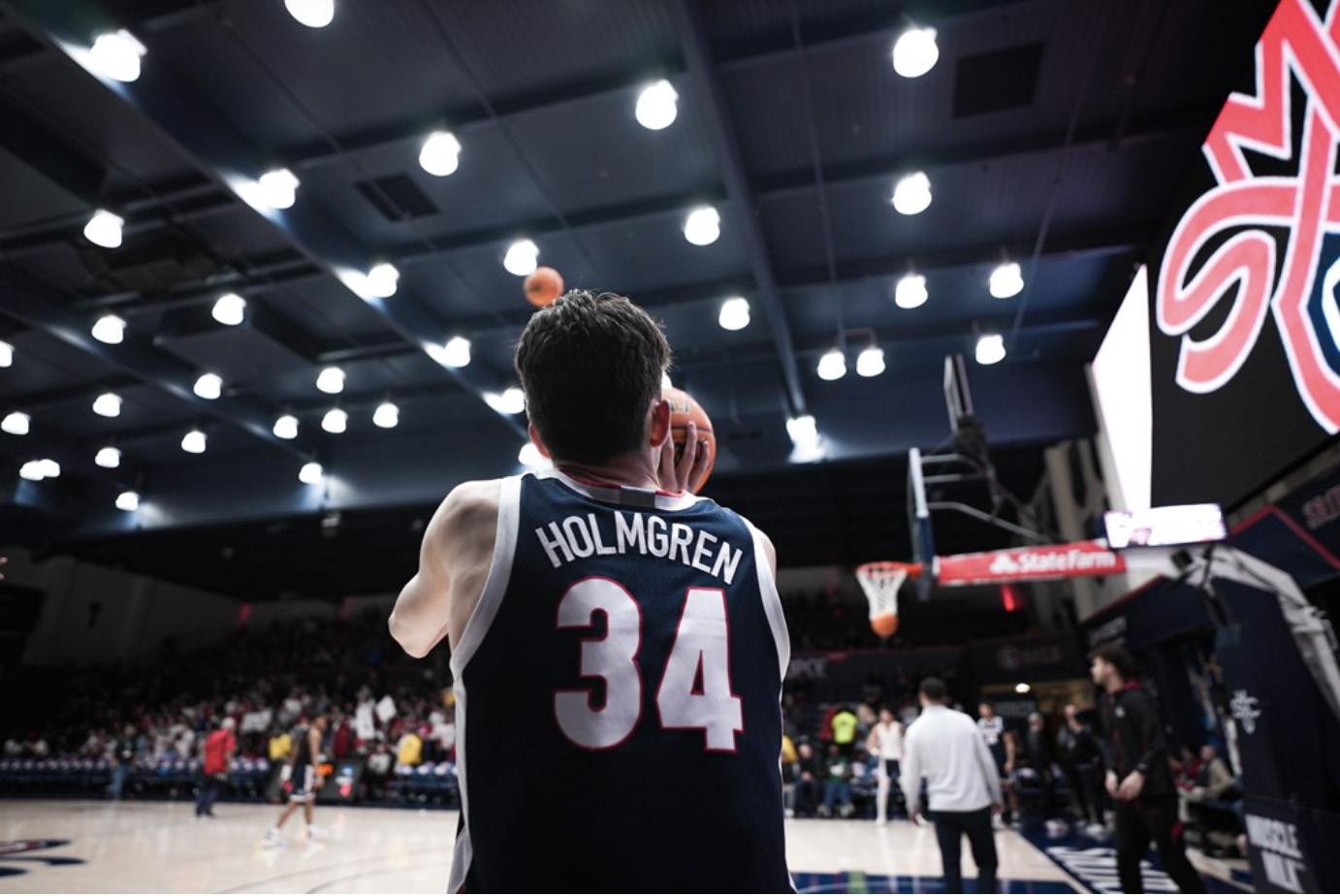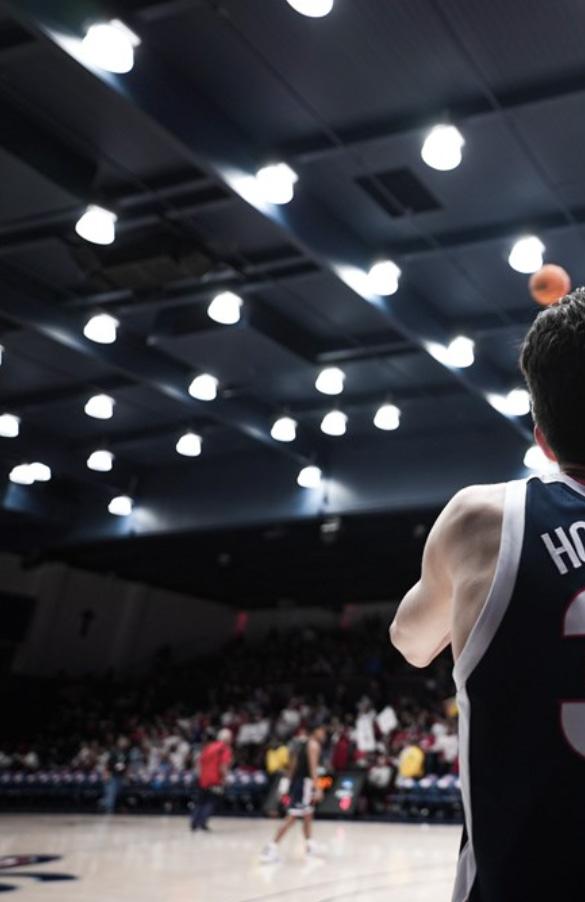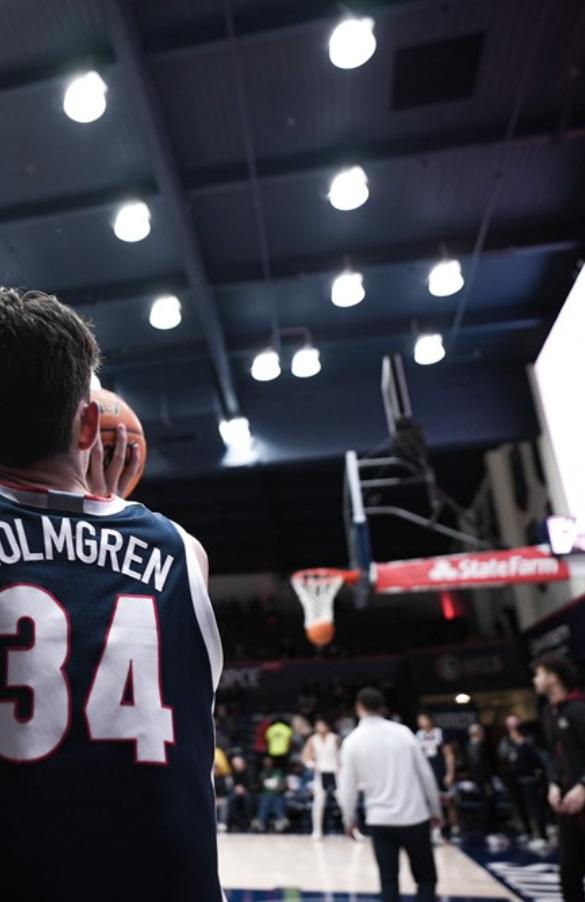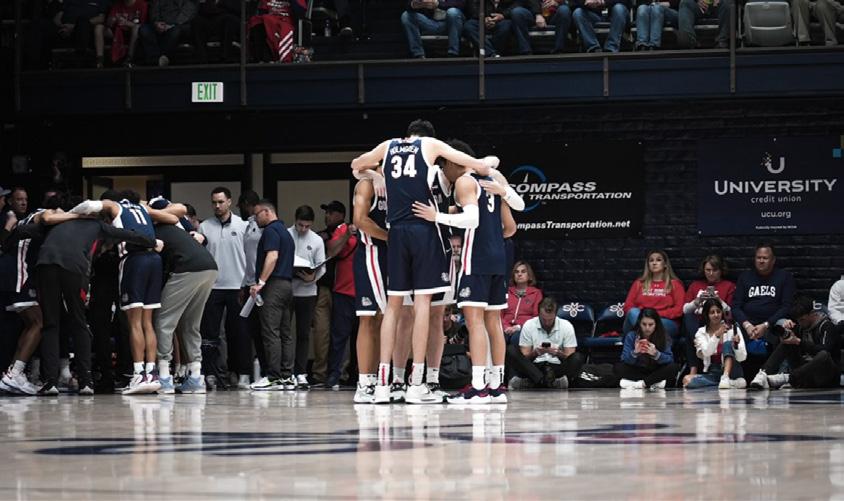
5 minute read
ENTERING THE NBA: CHET HOLMGREN
Entering the NBA
CHET HOLMGREN
Advertisement
By John Stewart
Iattempted to complete this prospect writeup before the 2022 NBA draft, however that did not end up happening. We now know that Chet was selected by the Oklahoma City Thunder and will likely spend a considerable I really wanted to be able to use a catchy name with some alliteration to describe my top four ranked players in the 2022 NBA draft. amount of his career in Oklahoma The “fab four”,the
City. Regardless, since we haven’t seen “fantastic four”,or
Chet play yet I believe my pre-draft even (admittedly less thoughts are still of some intrigue. exciting) the “frankly fine four” would have worked. Chet Holmgren, Jaden Ivey, Paolo Bancharo, and Jabari Smith are all better than “fine.” Each one of these young men is exciting, skilled, and overwhelmingly likely to play high-level basketball for a long time. But, certain individual limitations limit the top of the 2022 NBA draft from having the same top-end talent as, say, the 2019 NBA draft. Let’s start with Chet Holmgren from Gonzaga University. A tantalizing defender with the horizontal athleticism of a forward, the straight-line speed of a guard, and the rim protection of a big makes him truly unique. My favorite defensive comparison for him is the Memphis Grizzles' Jarren Jackson. I rarely compare individuals to

Jackson, as he is a game-changing defender. As amazing as Jackson is defensively, he has pitfalls that Chet also subscribes to, the main being core strength. When Jackson or Holmgren absorb contact from a driving guard or forward, they do not have the core strength to stay upright and therefore often foul when put in this scenario. This lack of core strength (and overall weight) will also lead to Chet being targeted for post-up opportunities from other team’s big men, which of course is not ideal. Jackson only averaged 24.8 minutes per game in this year’s playoff match-up against the Minnesota Timberwolves due to fouling in these scenarios. Just like Jaren, Chet does not foul as a weak-side rim protector. This is Chet’s main defensive skill and with his size, length, basketball IQ, and speed he will be one of the best weakside rim protectors in the NBA for at least a decade. It must also be noted that Chet’s horizontal quickness and length will make him one of the best big men in the league at switching onto smaller (often time faster) players. Offensively, the comparison for Jackson begins to fade. Chet is simply far better. Chet can handle the ball to a degree that players his size rarely can. He looks eerily like Al Horford in fast breaks as a ball handler and when attacking close outs, however he is almost 2 inches taller. This skill has been huge for the Celtics and Hawks (where Horford has been used properly and played his best ball). Horford’s ability to handle the ball has taken away considerable pressure from both the Celtics and Hawks, who at times did not have elite level ball handling on their roster. Similarly to Horford, Chet combines his dribbling ability with above average levels of passing, making his transition skill translatable to an NBA environment where eager threepoint shooters will crowd the three-point line. Chet will never create out of the pick-and-roll or shift defenders with his eyes, but his passing will allow him to function as an elite transition threat. Of course, his size, speed, and athleticism will make him an above average rim finisher in these situations as well. Besides transition game, Chet seems to be a developed shooter, although his shot is slower, and he took relatively easy shots on low attempts at Gonzaga (3.3 three pointers attempted per game). He is a skilled shooter, but the comparisons to the likes of Michael Porter Jr. or Kevin Durant are asinine. Chet won’t

be shooting over the tops of players out of isolation or in movement initially. Nor does he have the ball handling skills to get himself into those situations. However, he will be able to spot up in the corner or on the wing and be a solid piece in a winning offense. The last component of Chet’s offensive game that I want to discuss is his isolation or raw scoring ability. This is where I differ from national media the most on this prospect. Many highly touted scouts have accepted that Chet will isolate in the mid-range, post ups, and maybe even from three. If this happens initially, it will be inefficient offense, but of course it could eventually become efficient if those skills develop. Chet simply does not have a tight enough handle on the ball to be an elite mid-range scorer. He is silky smooth for a big, but not generationally smooth like Kevin Durant. In those situations, Chet would likely have the ball taken from him or be bumped from his spot due to his lack of lower body and core strength. These same concerns of strength will occur as Chet attempts post-ups. NBA athletes are stronger than West Coast Conference collegiate athletes and will not allow Chet to steady himself in the paint. I would imagine that upwards of 85 percent of players in the NBA will be able to do this making it nearly impossible for Chet to hunt for mismatches. After reading that last paragraph, one might think I am low on Chet. Not at all. I simply don’t think he is Kevin Durant. The way he is described on ESPN or by Skip Bayless makes him sound like he will be a main scoring option on a championship team. I would be shocked if this occurred. Instead, Chet is a unique weak-side shot blocker, fantastic at moving his feet and using length to stay in front of guards, and can rebound at an average rate for a big (and that’s just on defense!). He combines that unique defensive ability with fantastic transition play, above average passing, and good (not great) three-point shooting. Simply, unless Chet is hurt at some point in his career, he will be a useful NBA player for a decade to come. Even if he never develops into a super star, his ability to fit alongside other players will make him a useful NBA player at the least.


919-295-5055













